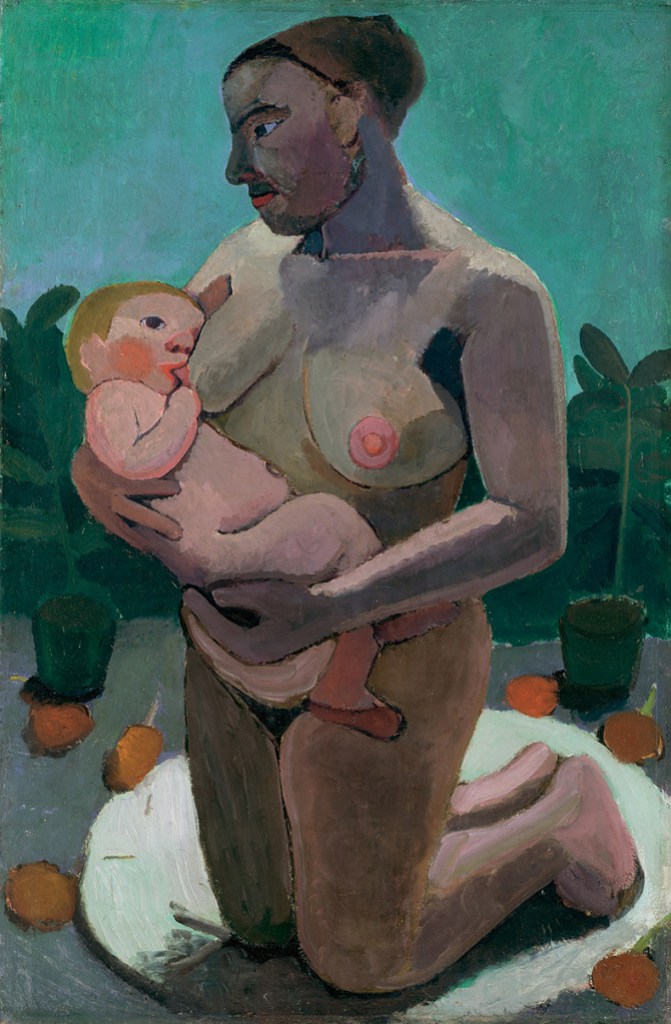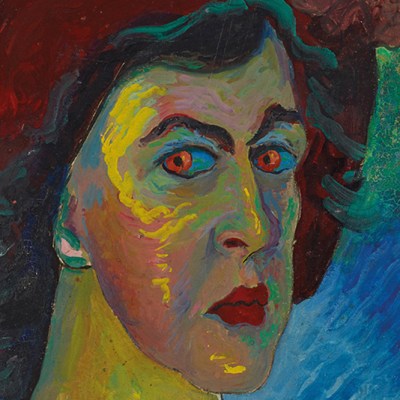From the September 2024 issue of Apollo. Preview and subscribe here.
Paula Modersohn-Becker produced more than 700 paintings and some 1,400 works on paper between 1898 and her death in 1907 at the age of 31: sensitive, forthright paintings of mothers and children, dignified drawings of farmers and workers in old age, landscapes that double as character studies of silvery birches, and revelatory self-portraits. In 1906, she painted what is believed to be the first nude self-portrait by a woman. In all of her art, Modersohn-Becker sought to portray ‘the singular essence of things’, as she wrote in a letter to her husband, the painter Otto Modersohn. She worked primarily among the small community of artists in the moorland village of Worpswede, alongside her friends the sculptor Clara Westhoff and poet Rainer Maria Rilke. Modersohn-Becker, however, went her own way, depicting bodies in a realistic and personal idiom that anticipated both cubism and German Expressionism.
Yet most of her work is little-known outside her native Germany and home city of Bremen, where the Paula Modersohn-Becker Museum opened in 1927. ‘Paula Modersohn-Becker: Ich bin Ich/I Am Me’, curated by Jill Lloyd and Jay Clarke, is the first comprehensive exhibition of her work in the United States. (It will travel to the Art Institute of Chicago in October.) This notion of ‘becoming herself’ is the guiding thread among the roughly 70 works on view, which are organised not chronologically – one quickly comes to feel the compressed time frame of Modersohn-Becker’s career – but thematically. Her earliest works are medium- and large-scale charcoal drawings of Worpswede locals, frequently women and girls. Their faces are rendered in aching detail: a red-headed girl’s pale eyelashes and sloped forehead, the bony angularity of an older woman’s back and neck set against the soft droop of her breast, the lean arms and creased face of an old weaver whose stern demeanour is offset by the rippling ribbons of her hat. These drawings are humanising, akin in their frankness and vulnerability to Käthe Kollwitz’s contemporaneous etchings and prints of women, workers and children.
Standing and Kneeling Nude Girls in front of Poppies II (1906), Paula Modersohn-Becker. Lübecker Museen, Museum Behnhaus Drägerhaus (on loan from Dr Kurt Wünsche, Zwickau). Photo: © Paula-Modersohn-Becker-Stiftung, Bremen

Most of Modersohn-Becker’s subjects are pressed up against the picture plane and are often cut off by the limits of the canvas – an arm, feet, the top of a head. Even her landscapes begin in the viewer’s lap. Birch Trunk in front of a Landscape (c. 1903), for instance, catches only the midsection of a tree, its branches and roots somewhere beyond the frame. Here and in other paintings of birches, she prioritises a close study of the trees’ mottled bark, each as individualised as a person’s features. In Paris in 1903, Modersohn-Becker saw Egyptian art at the Louvre, including Fayum mummy portraits dating from Roman rule in Egypt. ‘What grand and simple insight went into their creation,’ she wrote in her diary. ‘Brow, eyes, mouth, nose, cheeks, chin, that is all. It sounds so simple and yet it’s so very, very much.’ Her Self-Portrait with Amber Necklace (c. 1905) resembles these ancient paintings and its creamy, rose-tinted background almost passes for faded gilt.
One of the last rooms in the exhibition contains eight self-portraits, several nudes of lithe girls and of mothers breastfeeding or reclining with their infants, and a wall of four still lifes, primarily depicting arrangements of oranges and gourds. Many of these were made in 1906, when Modersohn-Becker had left Otto and moved to Paris, feeling that Worpswede had become ‘too limited’ for her. (She returned to the village, and to her marriage, in 1907 and became pregnant.) In the galleries of Paris, she absorbed the work of Cézanne, Rousseau, Gauguin and Courbet and saw African art at the Musée du Trocadéro (at the same time as Picasso). The faces in her self-portraits from this period are rendered in impastoed layers of paint, swirling with greens, reds, pinks and yellows that provide dimensionality and emotion without the use of outlines or much shading. They summon her earlier drawings of old women, though now, in place of intricate charcoal lines, the faces are fulsome, incarnate.
Girl Blowing a Flute in the Birch Forest (1907), Paula Modersohn-Becker. Paula Modersohn-Becker Museum, Bremen
Photo: © Paula-Modersohn-Becker-Stiftung, Bremen

In her catalogue essay, Lloyd details the pleasure Modersohn-Becker took in her own body. In her most famous painting, Self-Portrait on Sixth Wedding (Anniversary) Day (1906), her curves and fecundity are echoed in the split-open pumpkin and overabundant bowl of oranges that appear nearby in Still-Life with Pumpkin (c. 1905). She painted herself pregnant when she wasn’t and signed the work ‘P.B.’, the initials of her maiden name. Was the pregnancy a form of wish fulfilment or a celebration of the ‘creative potential of womanhood’, as Lloyd suggests? Or perhaps simply an expression of her creative potential as an artist? A few weeks before making the picture, and in the midst of these highly productive Paris years, she wrote to a friend, ‘I am becoming somebody – I’m living the most intensely happy period of my life.’
Midway through Marie Darrieussecq’s 2016 biography of Modersohn-Becker, she recalls a photograph of the artist taken in her studio in 1904, when she was not yet 30. ‘I try to see where her strength resides,’ Darrieussecq writes. ‘She is staring into space. Open and thoughtful. It is the photograph of a woman who paints, alone, whose paintings are not seen.’ Darrieussecq’s observations hint at the fortitude that underlies Modersohn-Becker’s brief but significant output: solitariness as ambition, originality and vision. In a letter to Rilke, in February 1906, she wrote of this self discovery: ‘I am Me, and I hope to become Me more and more. That is surely the goal of all of our struggles.’
Kneeling Mother with Child at Her Breast (1907), Paula Modersohn-Becker. Staatliche Museen zu Berlin, Preußischer Kulturbesitz, Nationalgalerie Berlin. Photo: © Paula-Modersohn-Becker-Stiftung, Bremen

‘Paula Modersohn-Becker: Ich bin Ich/I Am Me’ is at the Neue Galerie, New York, until 9 September. It is at the Art Institute of Chicago from 12 October to 12 January 2025.
From the September 2024 issue of Apollo. Preview and subscribe here.



